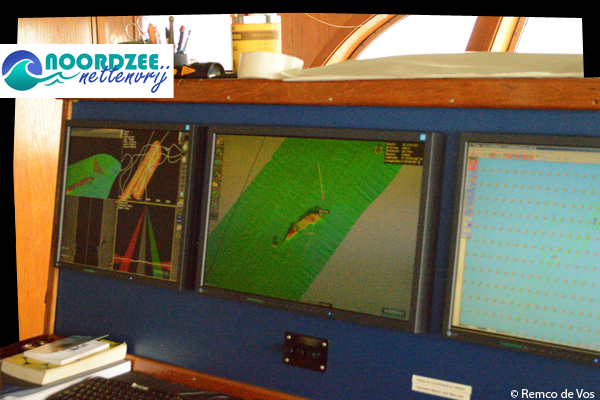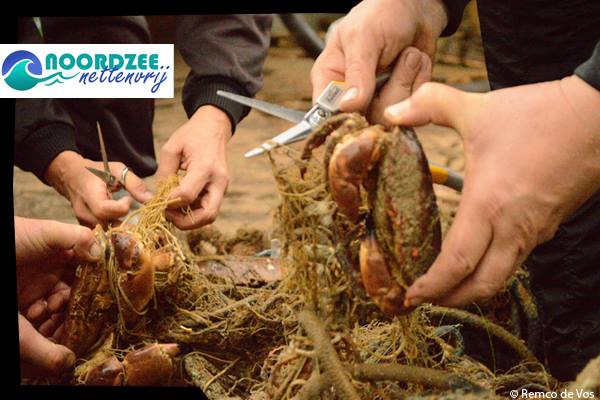North Sea Cleanup and Healthy Seas International mission
The trip through the Netherland ,Belgian and English waters.
A weekend at sea with Healthy Seas.
Friday 05 September 2014
It is Friday evening late. Shortly after each other the captain and mate for this weekend and the members of Healthy Seas with whom we will sail the trip of this weekend are coming on board the Bela. The sleeping locations are found and the diveequipment is hoisted on board.Everybody is prepared and looks forward to start. The connexion from the harbour Stellendam and the sea is limited in depth for ships with draft like the Bela ,about 5 meter ,the time to go is restricted to high water,so we have to wait until just after midnight.
00.26 finally ready! The engineer already had the machine running for a warmup and we seperate from the quay.Slowly we leave the jetty on our way to the locks that give us way to the sea. For some of the people it is quite an experience as they never were in sluices.
Once through the sluices we have to pass the shallows of the so called ‘Mudhole’ to reach the open sea.
What is the planning and where are we going to?
We will first go to the Belgian waters .We are interested to see the situation over there. The idea is to visit the ‘Kilmore’. This steamship sank in 1906. Length 86 m, Beam 13 m. According to our sources from divers it is completely covered with nets. The distance to go is 62 miles (a nautical mile is 1853 meter). So we all, exept the captain and the mate, can have a good nap to be fresh in the morning.
At the arrival on the scene we start with making a scan with the multibeamsonar to give us a good idea where to anchor and to bring the Bela in the good position.
The scan of the wreck. 
After the scanning and the anchoring the grab goes in the water and we fix it on a sturdy piece of the wreck, the Healthy Seas divers can now comfortably go down to the wreck via the umbilical (that is the composition of the hydraulic hoses and reinforcementcable that connects the grab with the hydraulic system). The grab and its ledlights form a clear orientation on the wreck and the bags with disconnected nets can be tied to the grab and brought up in an easy way. Then the divers came up their pockets are full with fishleads that they could pick up everywhere. And indeed the wreck is completely under the fishingnets as well as fishinglines with hooks and leads.
So clearing here is a very adequate job!
After a meeting we decide to make another divesession here the next tide and to free as many nets as possible from the wreck. After the dive and after the grab is up we can see the result. Bags with net are all hanging around the grab as well as big peaces of gillnets,and other pieces of heavy nets and lines.
The divers made several videos of the netsituation on the shipwreck. This wreck certainly deserves a proper cleanup to get it clean from all the swirling nets around it, it appears that also in the Belgian waters this is an urgent matter.
To the SS(steamship) Queen Louise..
After our investigation on the Belgian shipwreck we go North West just in the English part of the North Sea.We are underway to the Konigin Louise. We know already that this wreck is under the nets .We arrive here in the beginning of the evening and continue until deep night with the salvage of nets with the grab.The next morning we continue for a few hours and underwhile we free a lots of crabs that are entangled from the nets.
Free the crabs out of the nets
On our way back to the harbour…
Time flies like a rocket ,its already time again to go back. It was a successfull weekend!
A good investigation about the situation in the Belgian waters and we managed to recuperate a substantial quantity of lost nets from the wrecks and could save a lot of crabs from slow and certain death.
For a complete photoreport of this mission you can see our our medialibrary.
 Back to the website
Back to the website